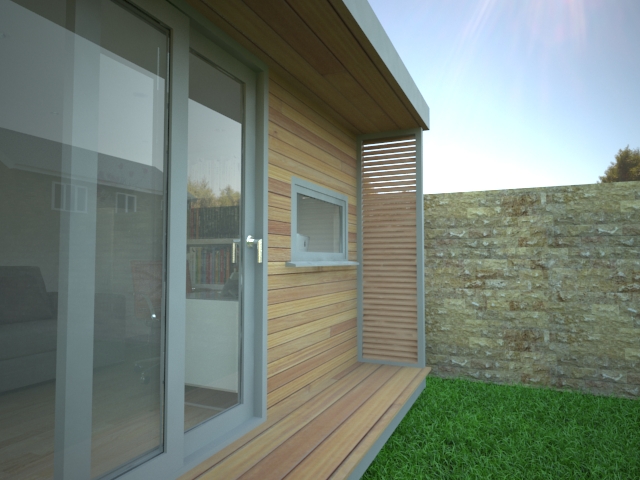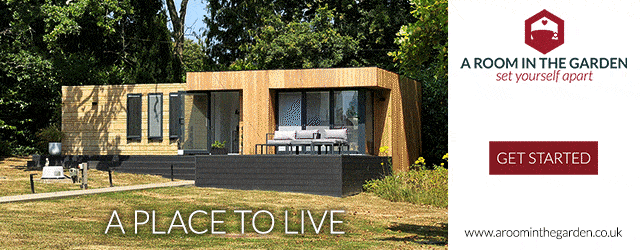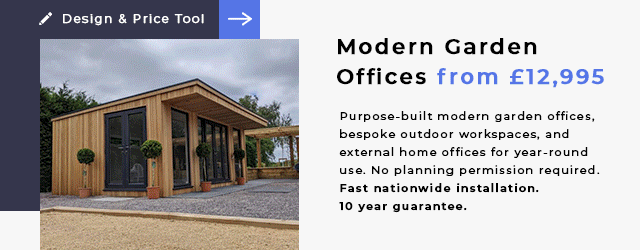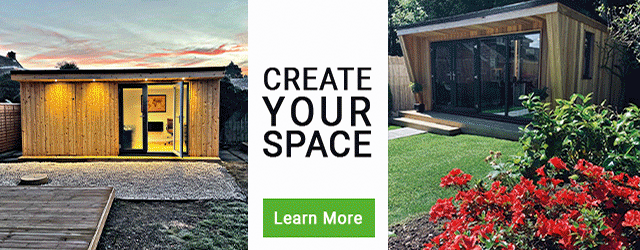In most cases the proposed location of a garden room dictates its size, shape and position of doors and windows, but the long term comfort of a garden room can be improved by taking a moment at the design stage to consider the buildings orientation.
The direction the main glazing is facing can influence the natural comfort levels of a garden room when it comes to light and warmth.
One of the key concerns of garden room buyers is whether they are truly comfortable to use all year round, the answer is that a high spec, fully insulated garden room is comfortable for year round occupation as they are built like houses, but like a house its orientation is an important design consideration.
Whilst an additional heat source and electric lighting will still be required, the direction a garden room faces can effect how much natural light and warmth the buildings has, this is not only important in the usability stakes, but also in the running costs of the garden room – less time you have the lights and heating on = lower bills!

Here in the Northern hemisphere South facing is the optimum orientation for any building, so you would ideally position the main glazing i.e. the doors and windows on the South elevation of your garden room, this will maximise the natural light and warmth from the sun. Obviously this isn’t always possible or you may want windows on the sides of your room, glazing on the East of the building will benefit from morn- ing sun, and West facing afternoon sun.
Our advice would be to avoid putting glazing on a North facing wall, unless of course you are an artist, as Northern light is considered more stable for painting!
It can be argued that maximising glazing on the South elevation may cause a garden room to overheat in summer, but there are lots of design elements which can be included to prevent this – they can also look very stylish!

Some contemporary design garden rooms have done away with eaves detail on the roof, but roof eaves create natural shading. Summer sun is much higher than winter sun so a deep eaves detail will break its journey and shade the windows and doors preventing the garden room from overheating. Deep eaves don’t however prevent sunlight entering the garden room in the winter as the sun is much lower and enters the room below the eaves.
Screening panels can slide along in front of the glazing to offer natural screening on the hottest days
Louvred screens are also useful in controlling the amount of sun that enters the building, several garden room suppliers have included these in their designs, either as sliding panels which can be positioned in front of glazing on the hottest days to diffuse the sun’s rays, or as fixed panels set at an angle to the glazing.
To think about the orientation of your garden room and the positioning of glazing at the design stage is a simple tip, but one that will improve your long term garden room living. Go on get your compass out and start planning!









